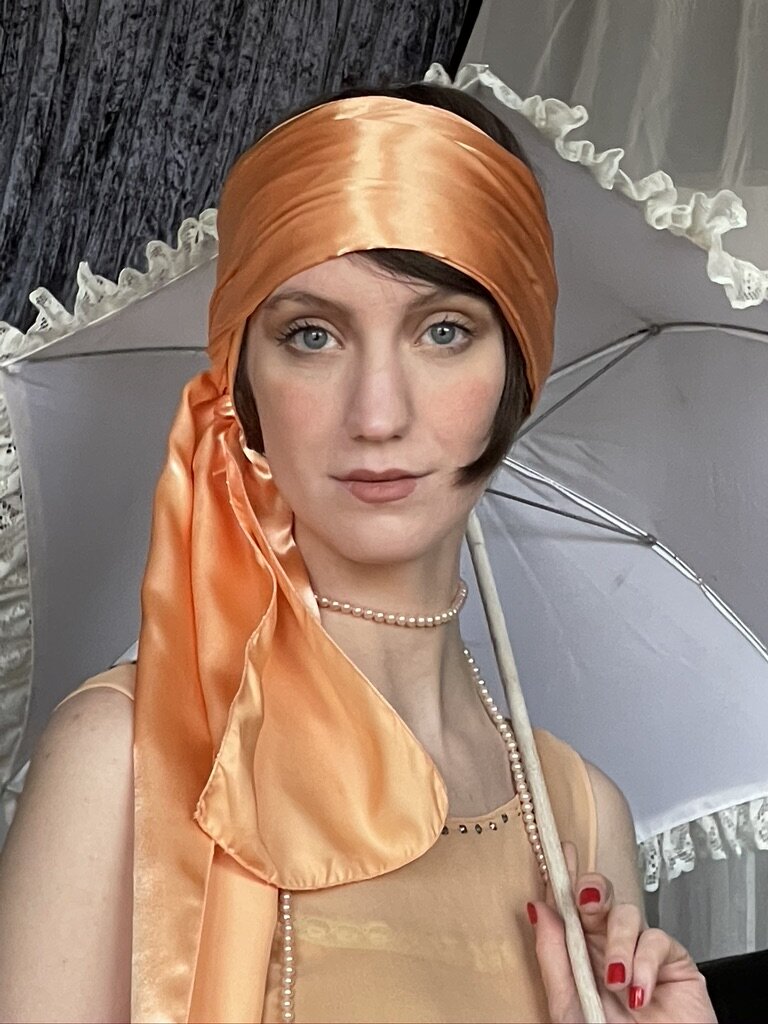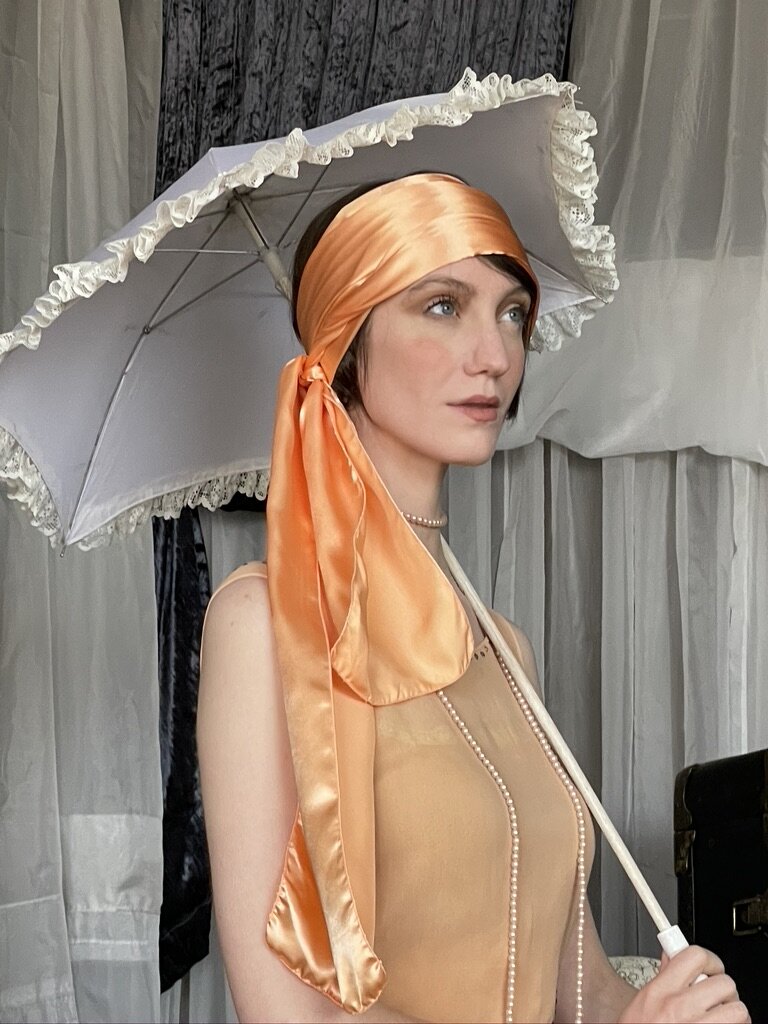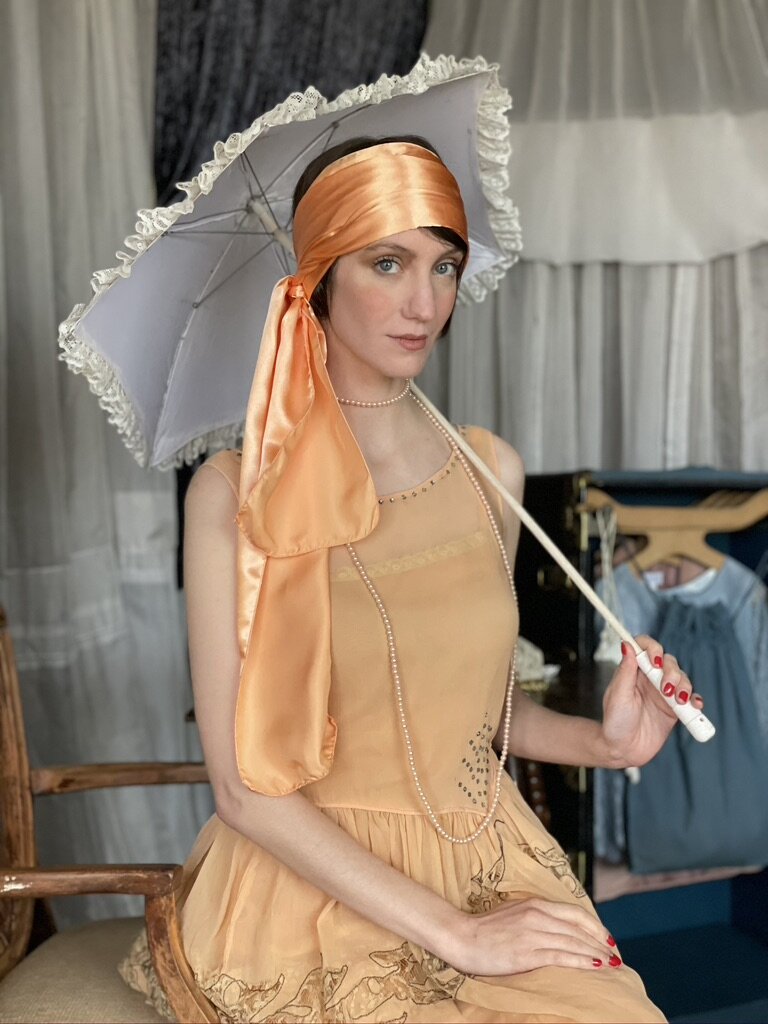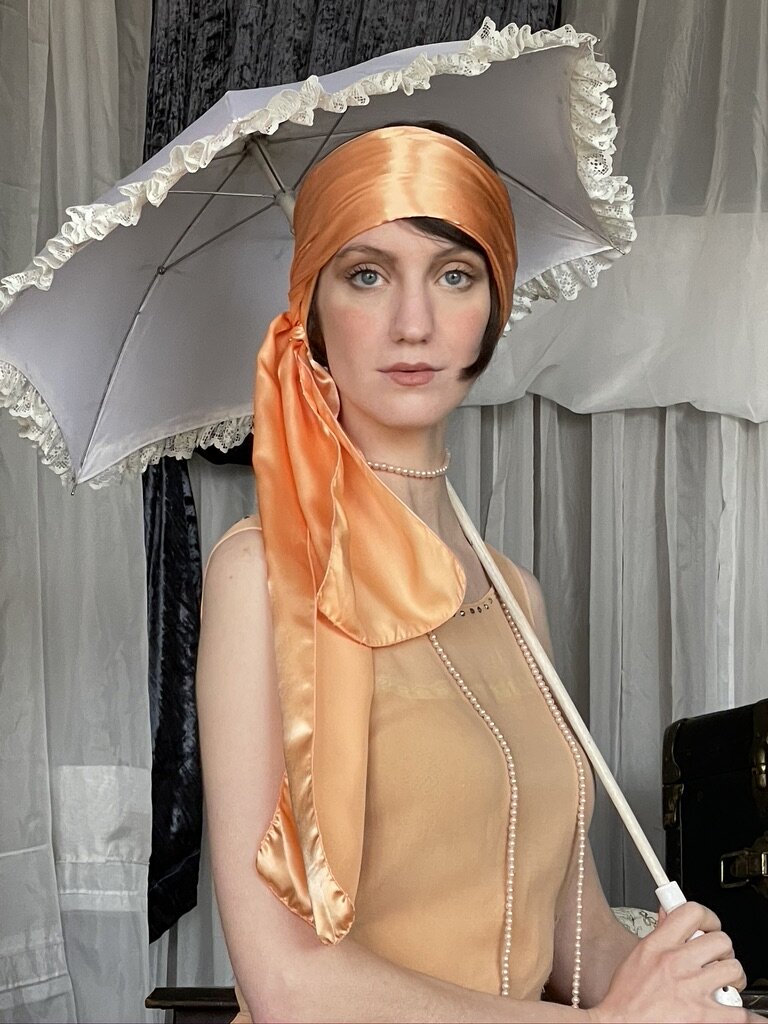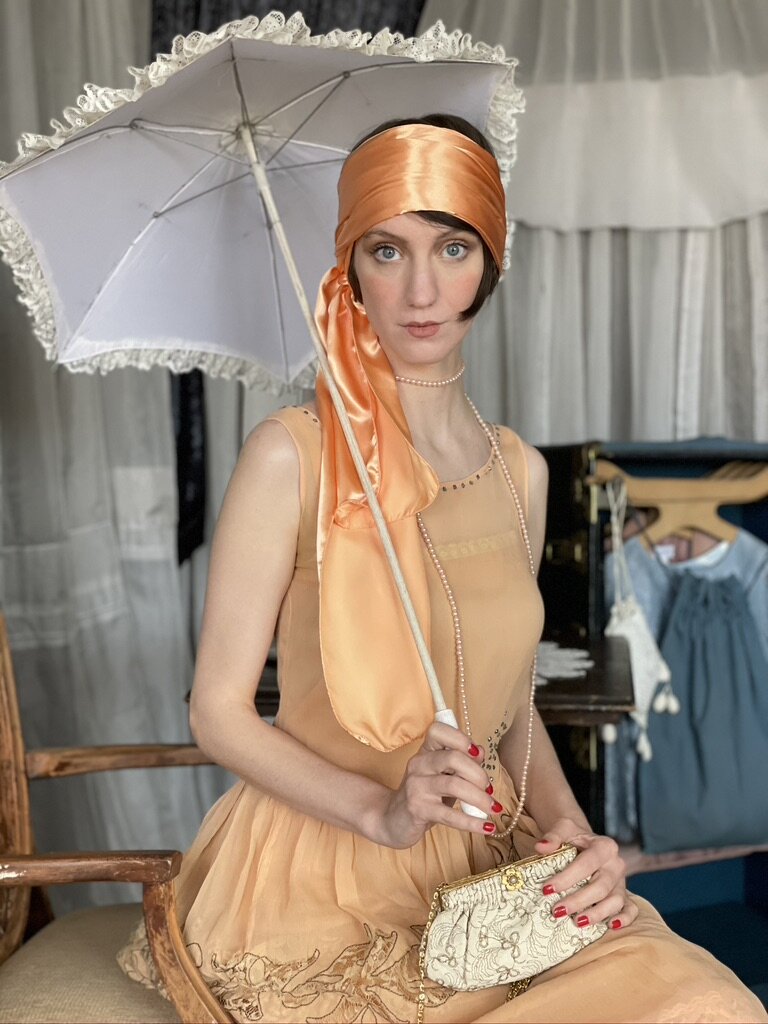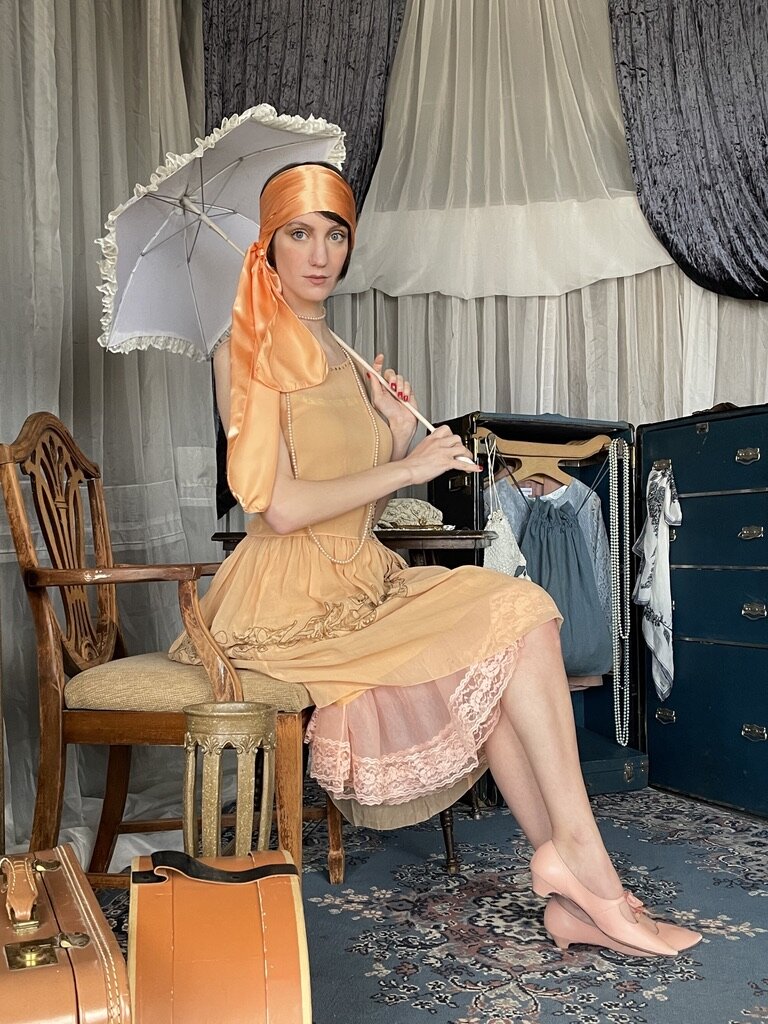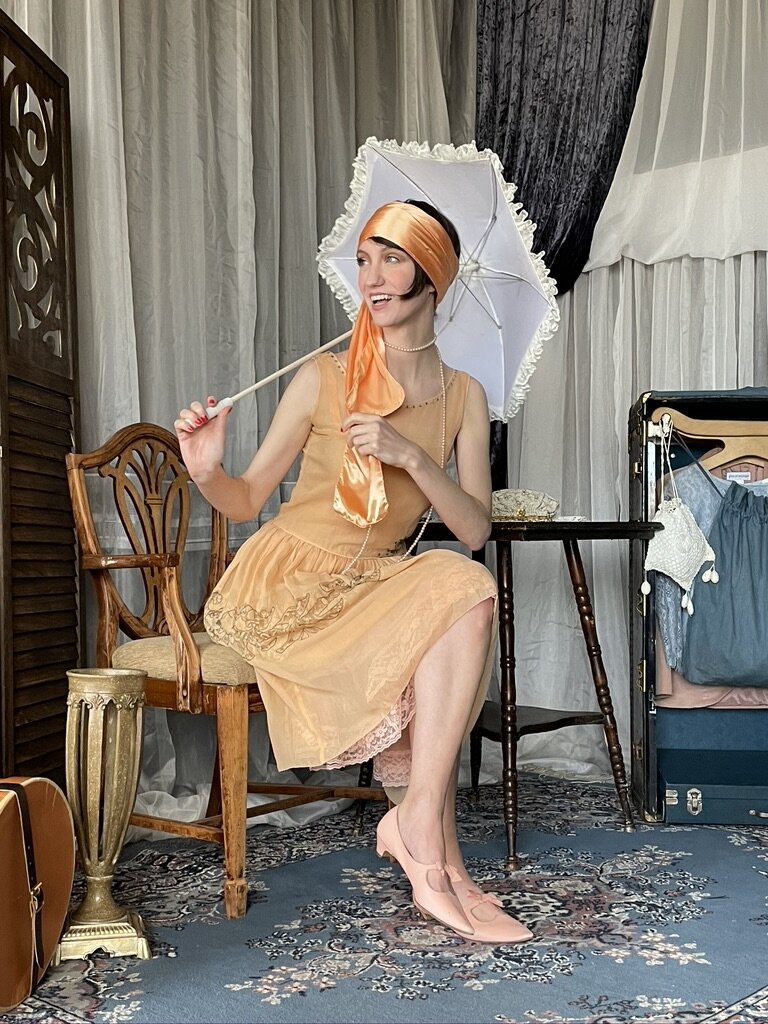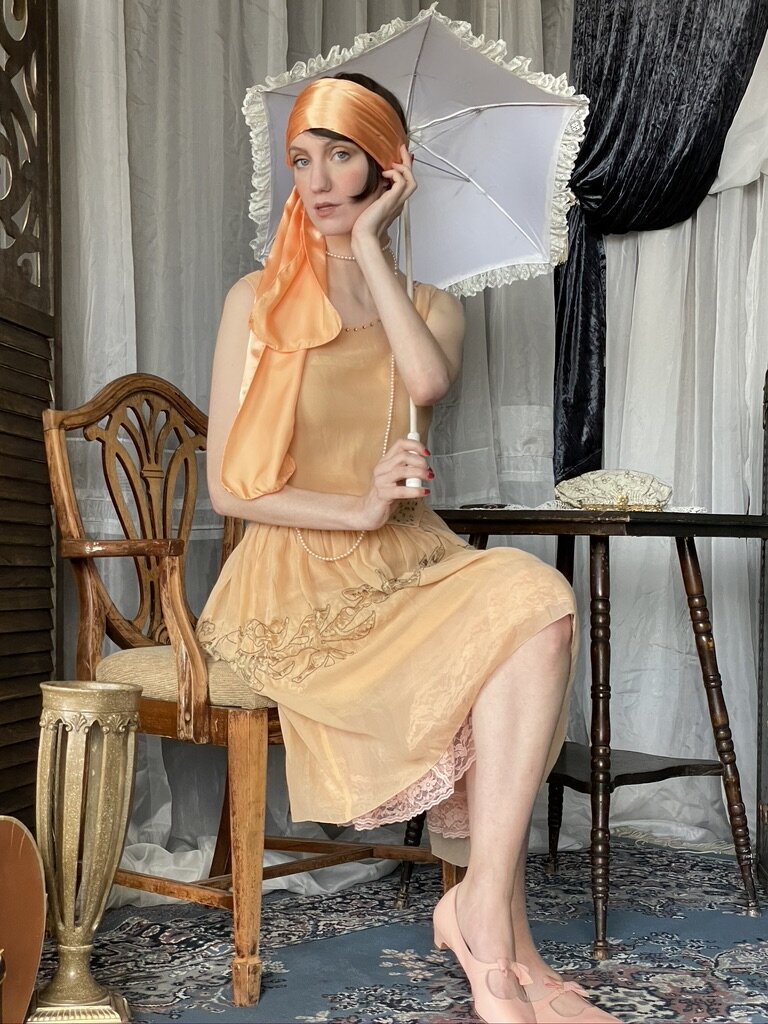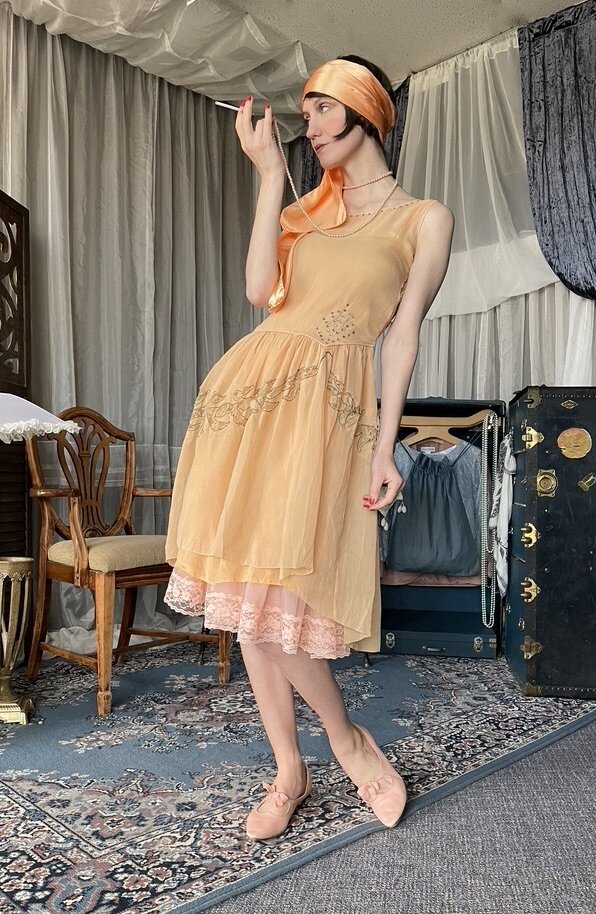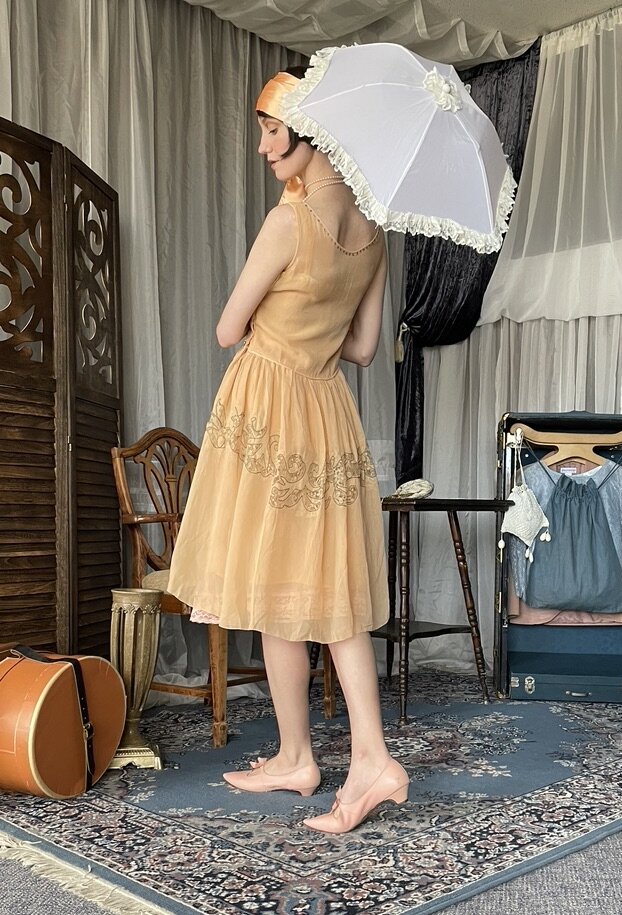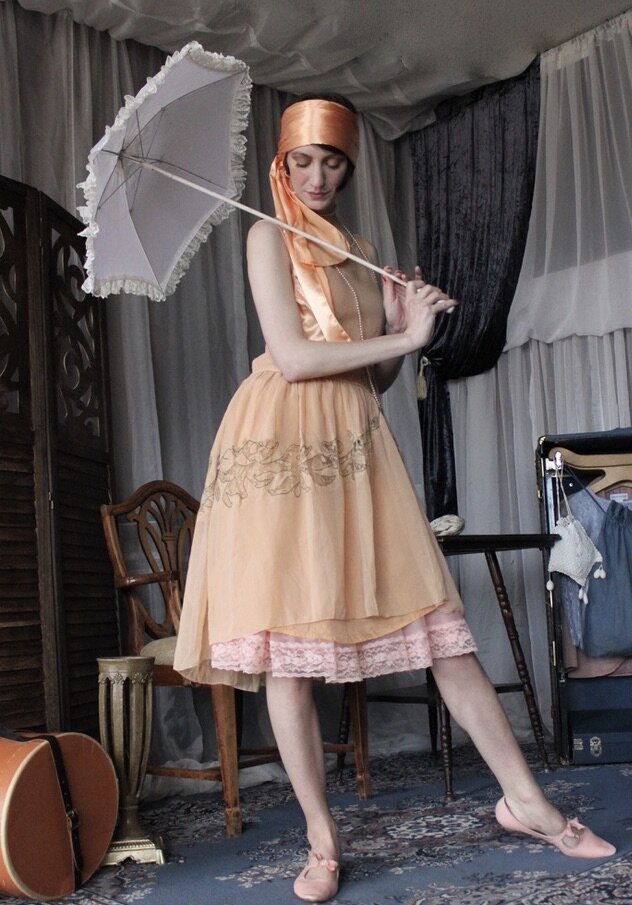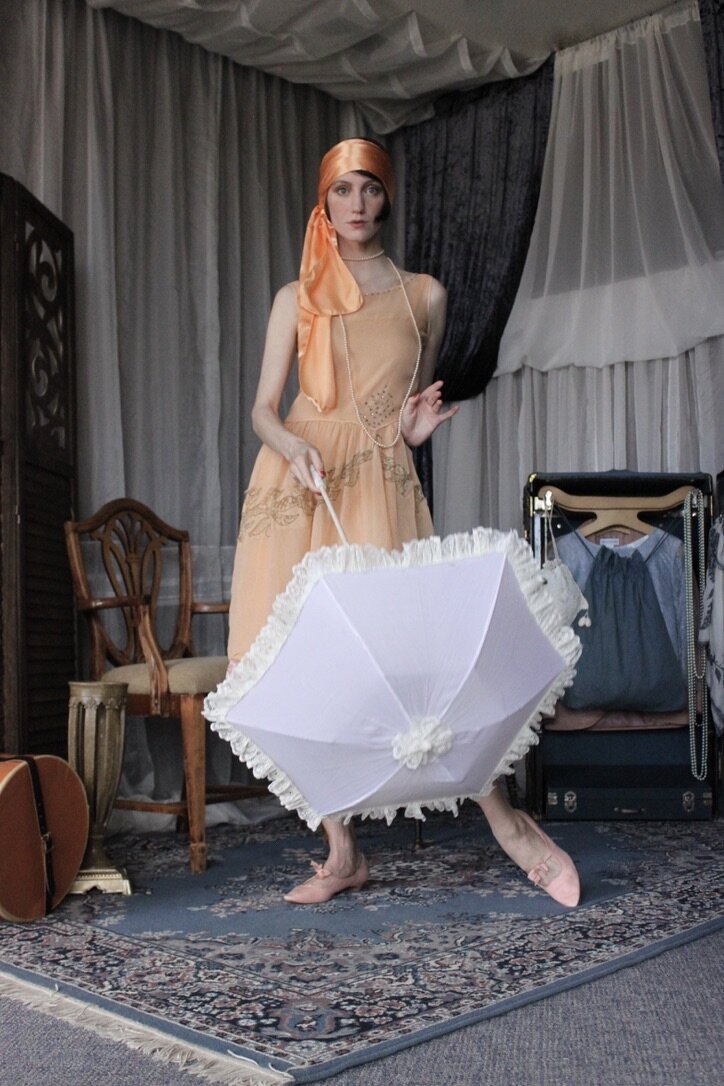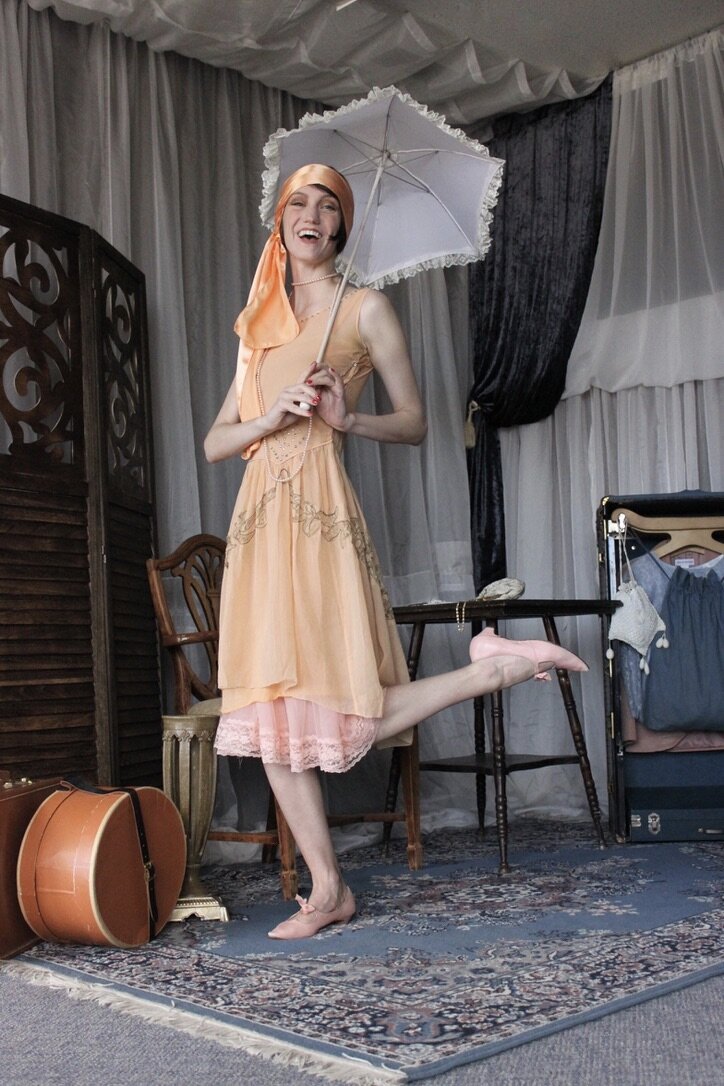Robe de style
Robe de Style was another silhouette that appeared in the 1920s, designed by ?
I paired this sweet little dress from my collection with a vintage purse and string of pearls, also from the 1920s. The parasol is a reproduction, probably from the 1990s, that I used when I costumed the musical, “Meet Me In St. Louis,” and the lovely head-scarf wrap is actually a cast-off satin table runner from my daughter’s events venue business. I grabbed it because you just never know when a table runner might come in handy. Case in point, this little throw-away proved to be the perfect topper for this ensemble. The shoes, you’ll see in other pictures are also vintage ‘20s, I’d picked up somewhere along the way. And closeups of the dress show the collar and front detailing to be rhinestones set in metal prongs, which makes it even more amazing that this dress survived the years. OakleyBoycottModel/LeslieDrollingerStratmoenPhotographer
Robe de Style
The Silhouette
The Robe de Style silhouette featured a fitted or chemise style bodice, waist-length or slightly dropped, with a wide skirt gathered at the waist. The silhouette was inspired by the mantua of the 17th Century, according to Emmanuelle Dirix, who wrote “Dressing the Decades.”
The Look
The fullness of the skirt was achieved in several ways, petticoats, hoops and panniers, many made fuller at the sides while flat across the front and back. Though the pannier may have been a nod to the mantua of the 17th Century, the panniers of the 1920s were not as severe. They were made of coarse material that would puff when gathered or padded or ruffled side bustles, while their predecessors were made of metal, cane or whalebone, and so extreme they forced the wearers to turn sideways to get through doorways.
The Designer
Though the style has been attributed by many to Jeanne Lanvin, with her introduction of the dress in 1924, Dirix says the silhouette had already been introduced the previous decade by costume designer MarcieF for the entertainer, Mistinguett. She goes on to say that even though by 1924 most couturiers were including the style in their collections, most notably Worth and Callot Soeurs, Lanvin laid claim because her clients and the press thought hers the most chic. So, the silhouette ultimately became her signature style.
Other historians, too, like those with the Metropolitan Museum give Lanvin full credit saying she began designing the full-skirted gowns in the early 1910s that by the 1920s would come to be known as robes de style. They maintain that Lanvin “considered the look, with its panniered form that evokes eighteenth-century elegance, feminine, romantic and universally becoming.” Their historians say Lanvin showed variations of the style in her collections through the 1930s, using delicate fabrics for a more modern effect. Like the 18th-century marchandes de modes, according to the Metropolitan’s website, Metmuseum.org, “fashion merchants who designed novel decorative trimmings for gowns whose form changed little from year to year, Lanvin offered the robe de style with an inventive array of embellishments.”
The Fall Out
The Robe de Style silhouette fell from grace toward the end of the decade, by 1927, when Jean Patou’s new silhouette reinstated the waistline, lowered the hemline and featured a flounced skirt. This new look, while still allowing for the ease of movement that the new, modern woman craved, was considered to be more sophisticated and feminine.
REFERENCES: “Dressing the Decades” by Emmanuelle Dirix (2016) Quid Publishing; Metmuseum.org.
